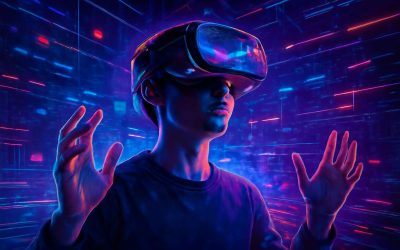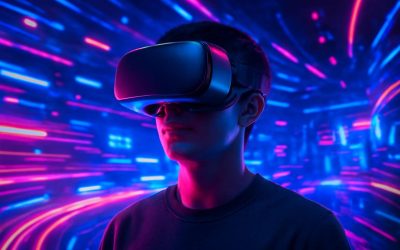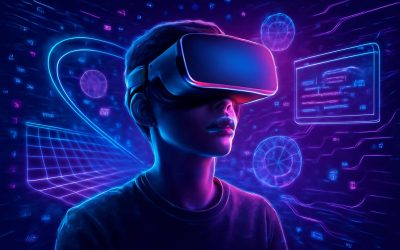
Virtual reality (VR) is an immersive experience that simulates a user’s sense of being present in a virtual environment. This can include visual, auditory, tactile and olfactory experiences. Unlike traditional displays, such as monitors and television screens, VR involves a headset that completely covers the user’s eyes, creating an artificial environment that is separate from their own physical space. This is accomplished through the use of stereoscopic lenses that display the same image to each eye, which creates an illusion of depth. This headset is paired with motion-tracked input devices, such as controllers and head-tracking cameras, to mimic the user’s movements in the virtual world.
The early history of VR can be traced back to a number of innovations, from the View-Master stereoscopic visual simulator in 1939 to Morton Heilig’s Sensorama multi-experience theatre in the 1950s. Designers began to focus on professionally geared applications of the technology in the 1970s and 1980s, including flight simulation, medical training and military combat. VR entered the consumer market in the 1990s through video games.
With the emergence of more advanced headsets in recent years, the industry has grown to support a wide range of VR applications. Some of the most popular are gaming, film and travel, but the possibilities extend well beyond these. VR also provides new opportunities in healthcare, education and business.
In the field of medicine, for example, doctors can be trained in a virtual environment to handle situations that would be difficult, dangerous or cost prohibitive to set up in real life. This can improve their empathy with elderly patients, for instance, or help them hone skills to calm nervous patients before surgery. VR can also help educate students about far-off locales or historical events.
Another application is in the construction and manufacturing industries. When architects and engineers design a bridge, skyscraper or home, they can use VR to see how it will look before it is built. They can zoom in to see all the details and apply real-world physics to their designs, such as wind and water, to test how they will function in the wild.
For those who want to explore the world of VR without investing in a headset, there are a variety of mobile devices on the market. These headset shells feature a smartphone screen that is separated by lenses to create a stereoscopic image. These are inexpensive and easy to use, but they offer limited positional tracking and do not provide the best virtual reality experience. The next step up is a headset that is designed to be worn for hours, so it needs to be light and comfortable. A good option is the HTC Vive Pro 2 or the PlayStation VR, both of which have a huge library of top-quality games to choose from. For the most immersive experience, consider a headset with an integrated display and high-resolution graphics. You’ll find these types of devices available for the Xbox One and PlayStation 4. The Vive Pro 2 is our pick, as it has the best combination of performance and price.



0 Comments